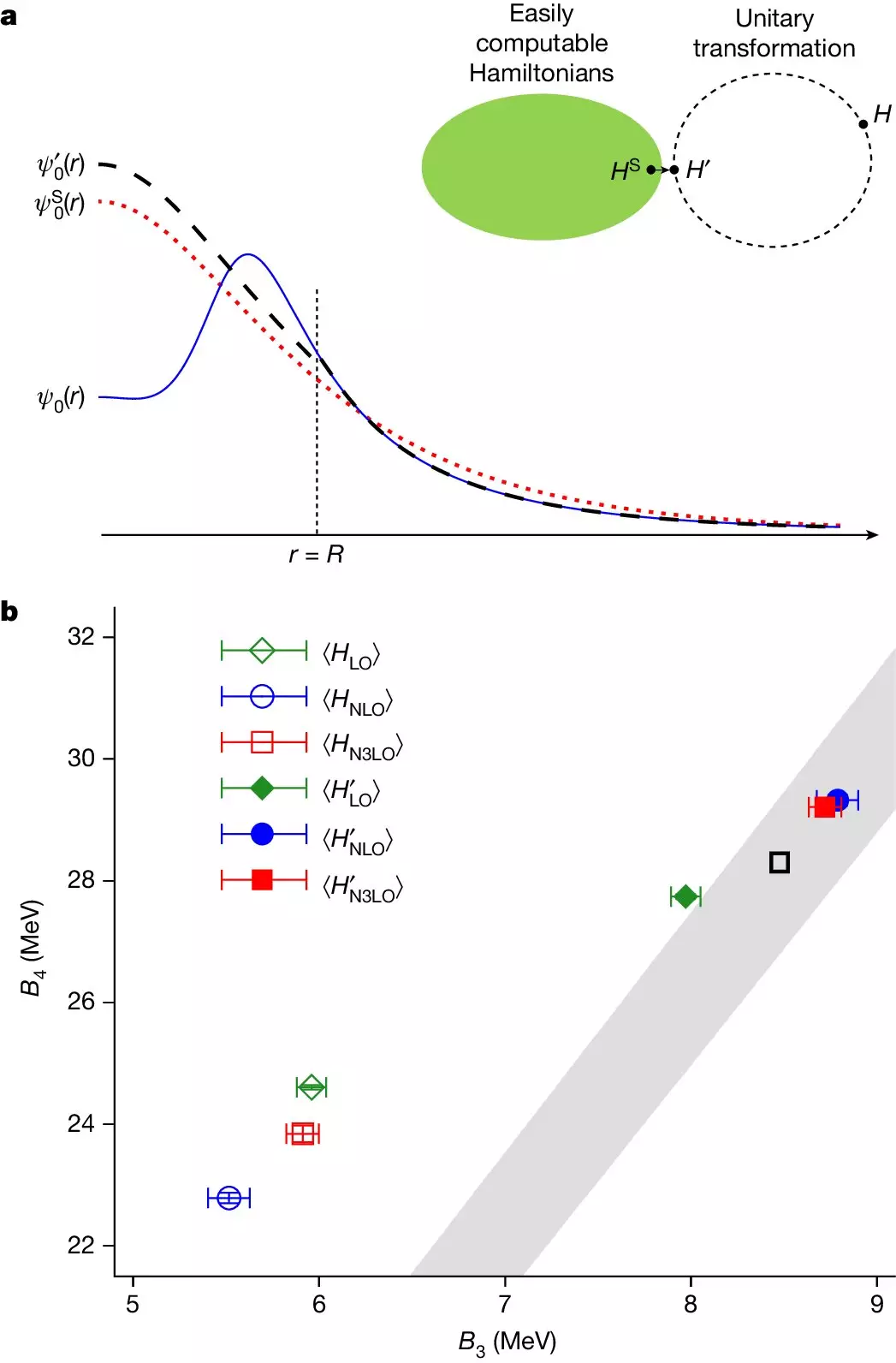Quantum physics and quantum chemistry rely heavily on strongly interacting systems, which can be challenging to study using traditional methods. Stochastic techniques such as Monte Carlo simulations have proven to be effective tools in investigating these systems. However, these methods encounter difficulties when sign oscillations occur, leading to inaccuracies in the final results.
Recently, an international team of researchers from various countries collaborated to develop a new method called wavefunction matching to address the sign problem in quantum simulations. This innovative approach involves mapping complex problems to simpler model systems without sign oscillations and then applying perturbation theory to analyze the differences. This breakthrough has enabled researchers to accurately calculate the masses and radii of nuclei up to mass number 50, with results matching experimental measurements.
Ab initio methods, such as quantum Monte Carlo simulations, play a crucial role in studying atomic nuclei by starting from the basic components and interactions of the system. These calculations can provide insights into binding energies, nuclear properties, and the relationships between nuclear structure and proton-neutron interactions. However, traditional ab initio approaches face limitations when dealing with complex interactions, such as the sign problem in quantum Monte Carlo simulations.
The Role of Wavefunction Matching in Computational Physics
Wavefunction matching offers a solution to the challenges encountered in ab initio calculations by replacing the short-distance component of a high-fidelity interaction with a more manageable interaction. This transformation preserves the essential properties of the original interaction, allowing researchers to perform calculations with greater precision. By applying perturbation theory to handle small corrections, scientists can now accurately predict nuclear properties, sizes, structures, and binding energies.
While the initial focus of the research team was on quantum Monte Carlo simulations, wavefunction matching has broad applications across various ab initio methods. This innovative approach can be utilized in both classical and quantum computing to enhance predictions of properties in materials, particularly in the emerging field of quantum computing. By leveraging the benefits of wavefunction matching, researchers can explore new frontiers in computational physics and expand our understanding of complex systems.
The development of wavefunction matching represents a significant advancement in computational physics, particularly in the study of strongly interacting systems. By overcoming the sign problem in quantum simulations, this method opens up new possibilities for accurate and reliable calculations in nuclear physics and quantum chemistry. Collaborative efforts between researchers from different countries have led to groundbreaking discoveries that have the potential to revolutionize our understanding of quantum systems. With further research and development, wavefunction matching may pave the way for exciting advancements in both classical and quantum computing.


Leave a Reply